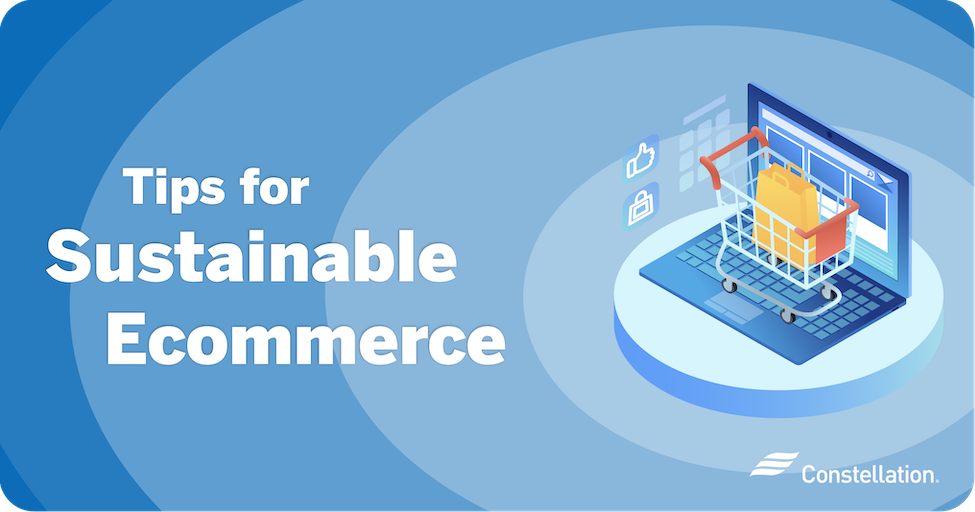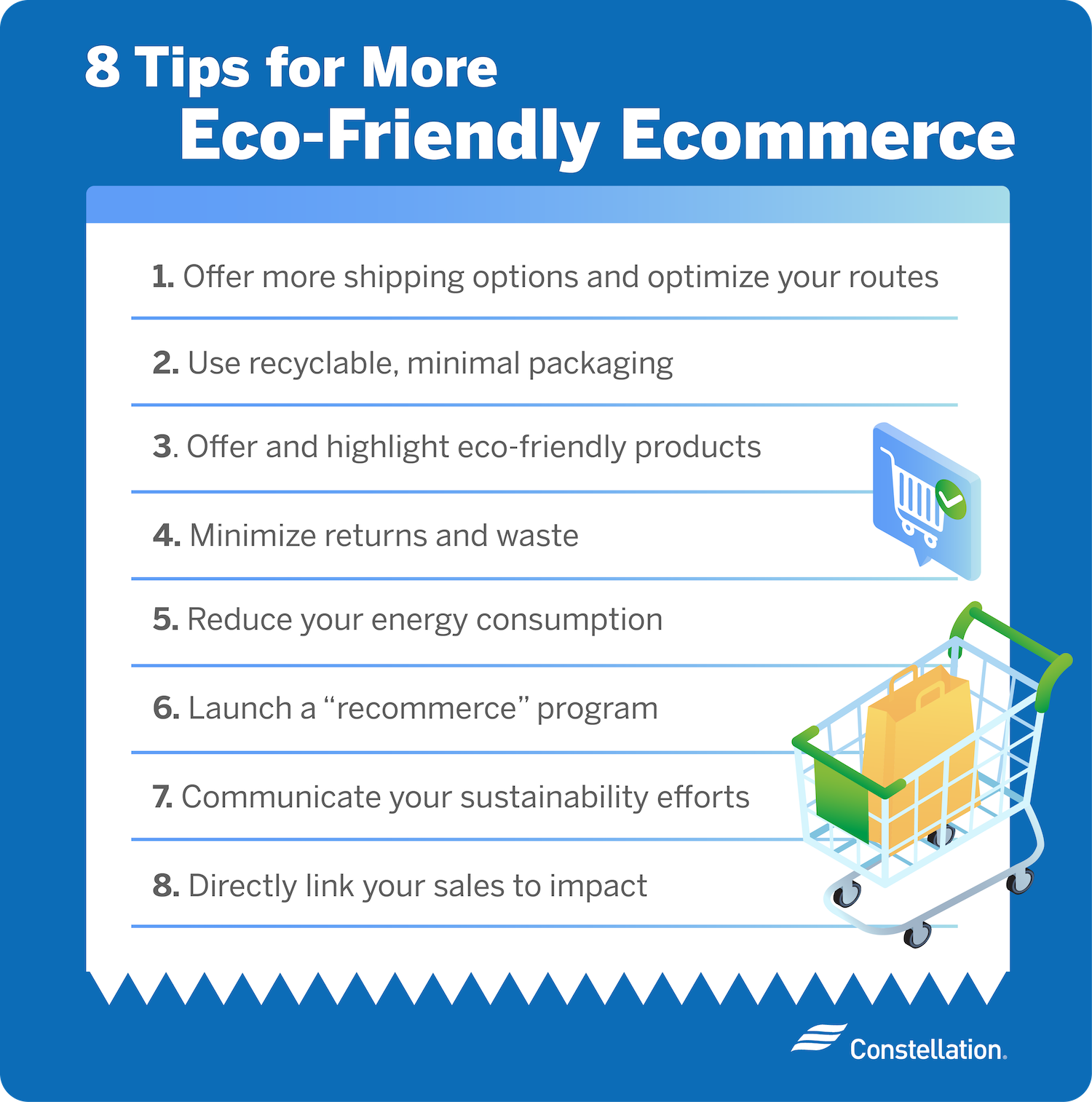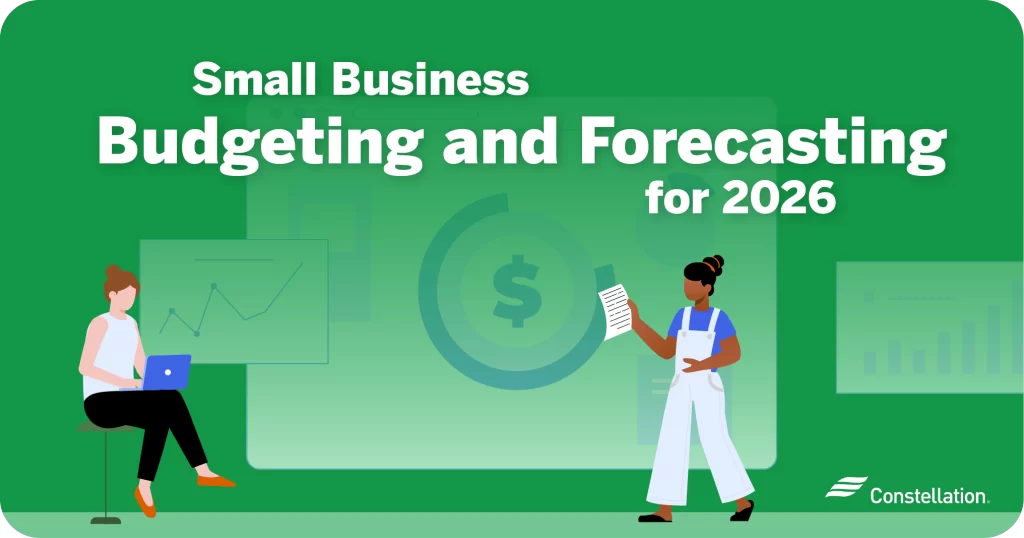
- Category:
Small Business Energy Savings -
Last updated:
May 1, 2025
8 Tips for Sustainable E-commerce
Consumers value sustainable e-commerce when they are deciding where to buy. 85% of consumers have changed where they purchase products in the last five years, favoring online retailers with more eco-friendly e-commerce practices. Consumers are willing to pay 9.7% more for sustainably sourced or produced merchandise.
The sustainable online shopping trend is being driven by younger Gen Z and Millennial shoppers, over 67% of which favor brands committed to ethical e-commerce and pay attention to the impact of online shopping on the environment.
Sustainable e-commerce is one of the small business trends that can help your business as you contribute to the community. Here, we take a deeper look at the trend and offer suggestions and tips for making e-commerce more sustainable in your company.
How does online shopping affect the environment?
Sustainable e-commerce considers the entire online shopping carbon footprint, which encompasses making products, bringing them to your door and handling waste and returns. Each step produces greenhouse gases. You may ask: How does online shopping affect the environment? In many ways, the online shopping environmental impact can be higher than traditional retailing:
- More delivery trucks and emissions: Instead of a truck bringing goods to one retail location, it must drive to homes and businesses all over its assigned delivery area, which produces considerable greenhouse gasses.
- Less efficient use of resources: To provide expedited, 1-day or 2-day shipping, companies are often forced to send out trucks that are filled below their capacity, resulting in an inefficient use of space and resources.
- Increased data center energy consumption: Keeping an e-commerce store up and running may require heavy-duty IT resources to power store platforms in data centers and to churn out analytics. These activities can be large consumers of electricity.
- More packaging waste: The products are typically packaged in boxes with bubble wrap and filler, which in turn are packaged in containers for shipping. Much of the packaging is single-use and isn’t recyclable, adding to the carbon footprint.
- Increased returns: Because consumers can’t touch, measure, assess quality or try on products, e-commerce has a higher return rate, leading to repackaging, transportation emissions and often goods that are discarded if they can’t be resold.
Why sustainability matters in e-commerce
E-commerce sustainability matters in more ways than one. Running a business that does not harm the environment is both more ethical and also key to its longevity. E-commerce sustainability can be more cost-efficient and boost profitability.
Consumers increasingly demand sustainable e-commerce practices. When you run your business the right way, you earn trust and a competitive edge. Ethical e-commerce that emphasizes sustainability can bring immediate and long-term benefits:
- Reduce environmental impact: Thoughtful approaches to operating your store, delivering orders and handling returns, as well as using sustainable e-commerce packaging, can dramatically lower your carbon footprint.
- Save on energy: Choosing the right data center, particularly one that optimizes energy use and looks for innovative power solutions, goes a long way toward business and e-commerce sustainability.
- Meet growing consumer demand: As your business grows, the impact of online shopping on your site increases. Thus, incremental improvements in sustainable e-commerce have a greater impact.
- Build brand trust and loyalty: When you make practical investments into e-commerce sustainability and make your commitment to ethical e-commerce known, you strengthen the reputation of your brand.
- Retain employees with fair practices: People want to work for companies that do things the right way, and sustainable e-commerce plays a big role in that.
- Futureproof your business: The impact of online shopping on the environment will always be a factor. As you minimize your carbon footprint and eliminate waste, you set your business up to thrive in the long term.
Do shoppers care about e-commerce sustainability?
Consumers care about e-commerce sustainability. 45% of consumers believe sustainability should be a given in everything they buy. Gen Z and Millennials are leading the way, with over 90% of them caring about sustainability, which includes carbon-neutral shipping and packaging. 68% of consumers will pay a premium for sustainable products.
Tips on how to make e-commerce more sustainable
Given the importance of eco-friendly e-commerce to consumers, your brand, the environment and your bottom line, here are some top tips for how to make e-commerce more sustainable.

1. Offer more shipping options and optimize your routes
Offer consumers choices that can lower the carbon footprint of shipping. You can offer slower shipping that bundles all items in one package.
You can also use route optimization strategies. Offering pickups in a central location, such as at participating retail locations, cuts the environmental impact of the so-called “last mile.” Investigate the availability of green fulfillment centers or companies that offset carbon emissions. For urban deliveries, bike or EV delivery methods make sense.
2. Use minimal, recyclable packaging
Sustainable e-commerce packaging takes several forms. Use materials with the potential for closed-loop recycling, like paper and glass. Beyond being easily recyclable, other options are to use materials that have been recycled or that are compostable. Lightweight and minimal packaging further reduce shipping costs and your carbon footprint.
3. Offer and highlight eco-friendly products
Make sure your customers know when they are buying a product made with eco-friendly materials. The carbon footprint of e-commerce includes every step in a product lifecycle, from manufacturing, selling and shipping to use and disposal, so be transparent on your website. Offer features like search filters and ratings that make it easy for customers to identify sustainable choices.
4. Minimize returns and waste
Returns are as bad for the environment as they are for your profitability and customer satisfaction. To help minimize returns and reduce waste in your business, try being specific with your product descriptions, especially about dimensions, materials and sizing. Include many photos and capture the details of each item. For clothing, consider offering fit technology, virtual try-ons or size-matching tools on your site.
Programs for taking back or repairing products, particularly electronics, keep toxins from landfills and give a second life to devices. Stock high-quality products made with long-lasting materials to avoid being part of the throw-away culture.
5. Reduce your energy consumption
Your business can save on budget when you save energy — while helping to also save the planet. Put effort into finding where you waste energy and where you can increase energy efficiency. You can further reduce the impact of your energy usage by using renewable energy and working with hosting companies and data centers that prioritize renewable energy.
6. Launch a “recommerce” program
Recommerce, or reverse commerce, is the practice of selling used or refurbished goods. It extends the life of merchandise, keeping it out of landfills and getting the most out of the resources that went into creating it. You can acquire stock through donations, trade-ins, item returns and consignments.
7. Communicate your sustainability efforts
Telling your sustainability story is as important as the practical steps you take to create a sustainable e-commerce business. Letting people know about your commitment to ethical e-commerce helps them make choices that fit their values and benefit your brand.
8. Directly link your sales to impact
You don’t want to be seen as “green-washing” or “virtue signaling” by making claims that you can’t back up with specific achievements. Measuring and reporting your data, such as your per-order delivery emissions, is one way you can convey your impact.
You might also use sales-based carbon reporting. Tools like Planet by Shopify, Pachama, Cloverly and South Pole make it easier to do this. You can also participate in programs like “one-for-one,” where you give away one product to someone in need for every one sold.
Can e-commerce be more environmentally friendly?
Sustainable e-commerce is vital for the ongoing success of your business and for the community you serve. While you have to contend with environmental challenges that brick-and-mortar businesses don’t have, you can take control and lead with an environmentally friendly e-commerce business.
Paying a bit of attention to details and to places where you can make a strong, positive impact will lead to e-commerce sustainability that your customers value — and that returns value to your bottom line.




